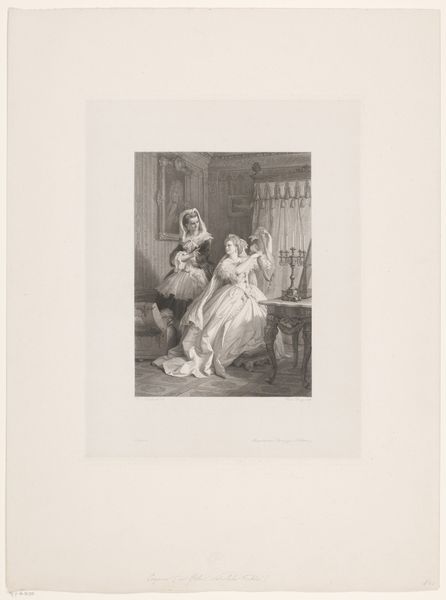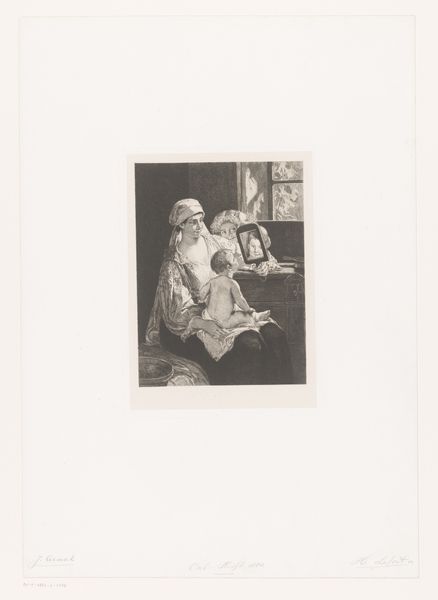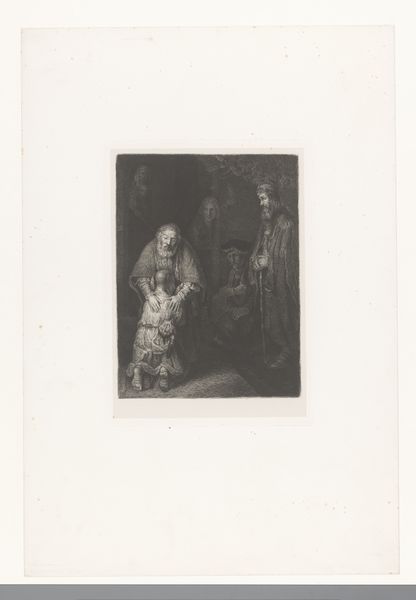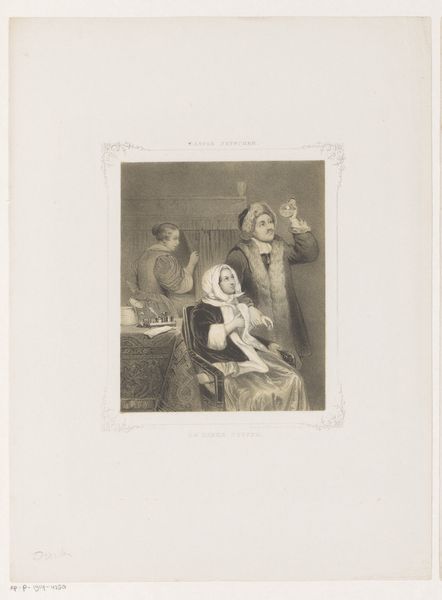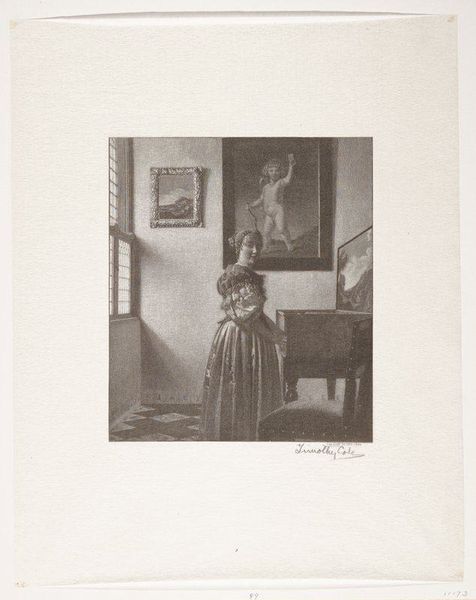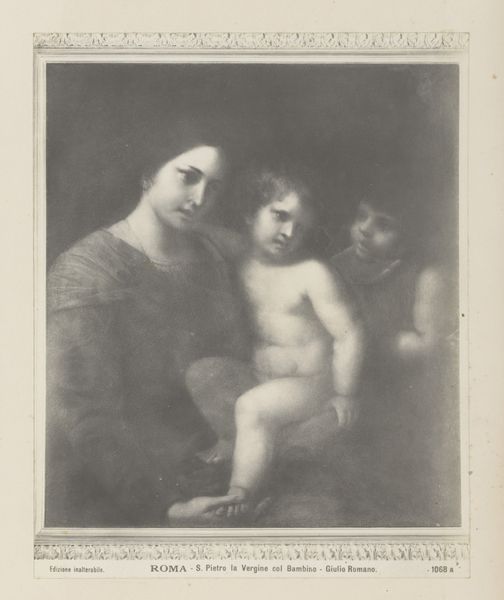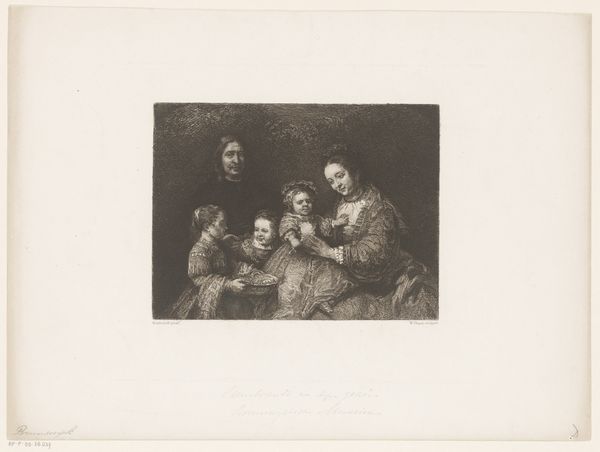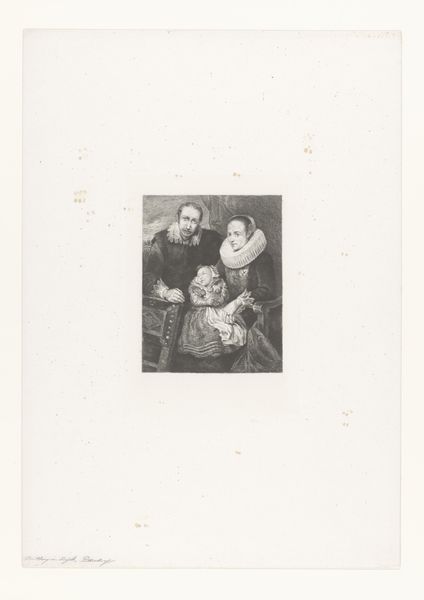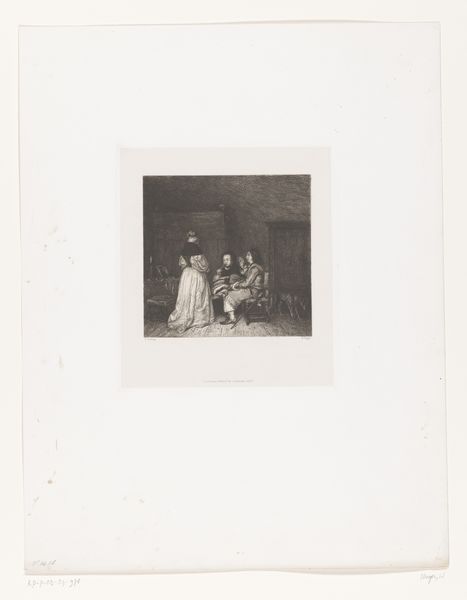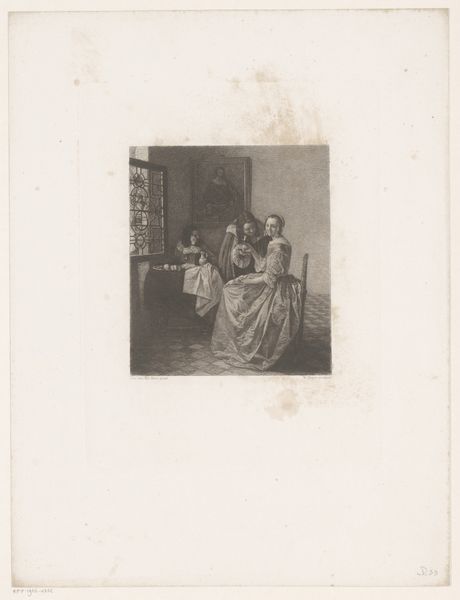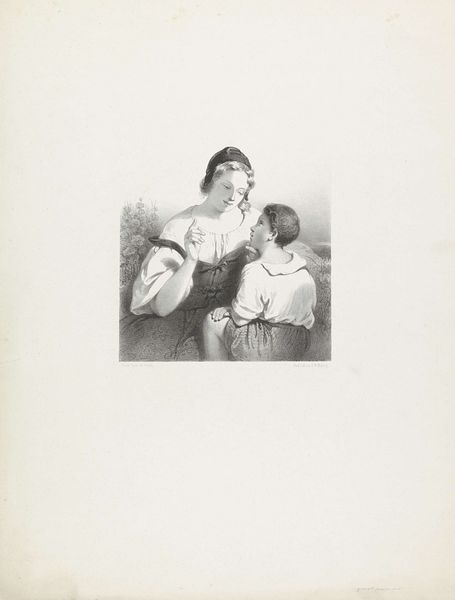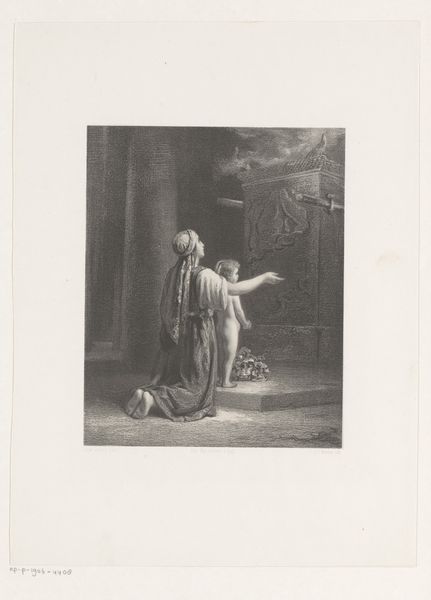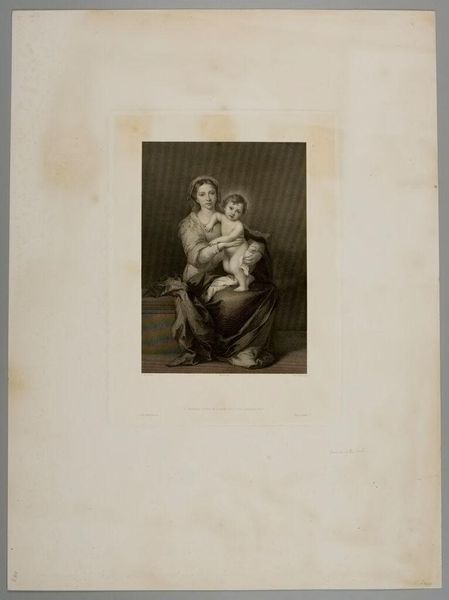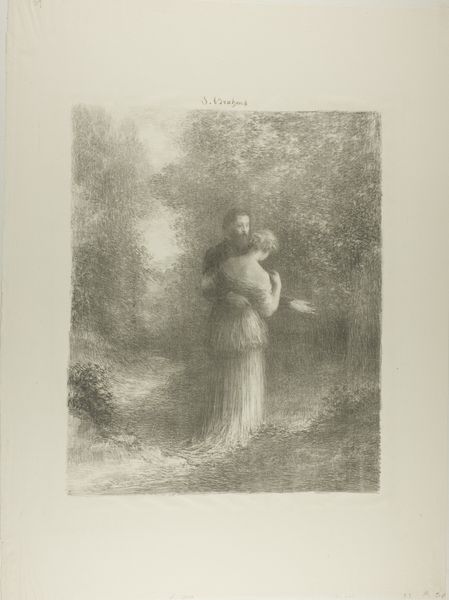
drawing, print, graphite
#
portrait
#
drawing
# print
#
charcoal drawing
#
form
#
line
#
graphite
#
genre-painting
#
graphite
#
realism
Dimensions: height 260 mm, width 207 mm
Copyright: Rijks Museum: Open Domain
Editor: Here we have Reinier Craeyvanger’s "Vioolspelende man met vrouw en kind," created in 1858. It's a drawing, a print, made with graphite and charcoal. It feels quite domestic and staged, a captured moment in a home, and what strikes me is how clearly defined the classes of this scene seem to be by how they are drawn and presented. What can we tell about the process and materials from how this print was made? Curator: Exactly! The deliberate use of graphite and charcoal points to a stratified approach to image-making mirroring the social structure represented. Note the precision of line in the woman's dress – a clear marker of her social standing painstakingly reproduced with graphite. Now, contrast that with the looser, almost smudged application of charcoal to depict the man's clothing and even the room's background. How does the difference in rendering style influence your interpretation of power dynamics here? Editor: I see what you mean. It's like the materials themselves are used to reinforce existing class distinctions, making it seem rigid and constructed. So the artistic choices, driven by the material itself, influence the viewer's understanding. Does the choice of print, a readily reproducible medium, then challenge or support these social boundaries? Curator: An insightful observation. The reproductive nature of the print, while potentially democratizing the image's distribution, paradoxically served to reinforce these very power structures for mass consumption. What impact could this readily available depiction have had on shaping perceptions of class and domesticity at the time? Editor: So it’s a feedback loop. The materials and production methods both reflect and reinforce existing social conditions, becoming almost a form of propaganda. It really changes how I view seemingly simple domestic scenes. Curator: Indeed. By understanding the materials, labour and means of production, we gain a deeper understanding of the artwork's cultural significance.
Comments
No comments
Be the first to comment and join the conversation on the ultimate creative platform.
